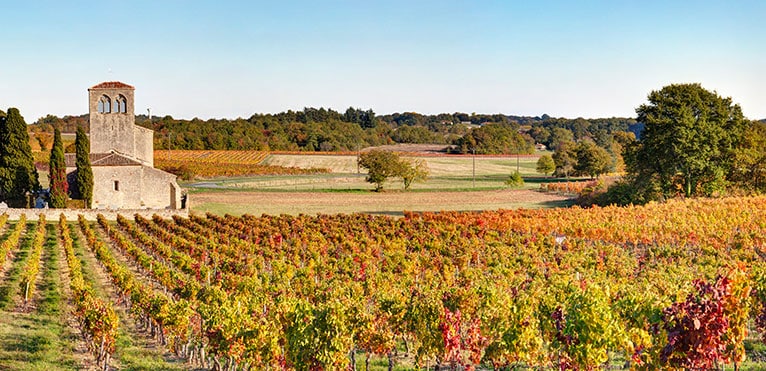
Contents
Irouleguy appellation wines originate in the Basque country. Spread over 250 hectares between the mountains of Irouléguy, Saint Etienne de Baïgorry and Anchaux, this AOC is produced in one of the smallest wine-growing areas in France. This is the only vineyard in the French Basque Country. It’s only since 1970 that the Irouléguy vineyards have been counted among the many AOC and AOP wines of the vast South-West wine region.
Irouléguy, a wine on the road to Santiago de Compostela
During the Roman occupation, viticulture in southern France and the Basque country developed considerably. With vineyards close to the Route of Santiago de Compostela, the history of the Irouléguy vineyards is intimately linked to the Christian religion. The monks of Roncesvalles cultivated the vines in this basin to make a liturgical wine for the many pilgrims.
In the 19th century, the vines of Irouléguy faced a terrible crisis due to a parasite (phylloxera) that ravaged all the vineyards. After the First World War, local winegrowers decided to form a cooperative, and in 1953 the wines of Irouléguy were recognized as VDQS (vin délimité de qualité supérieur).
The wine-making charter is based on several elements, including a minimum planting density of 4,000 vines per hectare, a maximum yield of 55 hectolitres per hectare and an alcohol content of between 10 and 14% for red and rosé wines, and between 10 and 15% for white wines.
Irouléguy, a wine that enjoys a privileged location
Spread over 230 hectares on steep slopes at an altitude of between 200 and 450m between the south of Béarn and the west of Jurançon, the vineyards are laid out in terraces. They are spread over more than 12 communes in the region, from Saint Etienne de Baïgorry to Saint Jean Pied de Port. The bowl-shaped region offers vines a very special climate for their development. The grapes benefit from the warm, dry winds that are captured in the basin and from an average annual rainfall for the region. The clay-limestone soils, made up of red sandstone and alluvium, are ideally suited to the region’s grape varieties.
Irouléguy is a flowery wine
The grape varieties used to produce Irouléguy red and rosé wines are Tannat (maximum 60%), Cabernet Sauvignon and Cabernet Franc. The white wines are made from Petit and Gros Manseng and sometimes Courbu. Red Irouléguy should be enjoyed at a temperature of 16°, while rosés and whites should be enjoyed cooler (10°).
Red wines are distinguished by their strong purple and garnet color. The whites have more of a golden straw color and slight green highlights. As for Irouléguy rosés, they can be recognized by their luminous color.
On the nose, Irouléguy wines are flowery. The red wines of Irouléguy release aromas of spices, red and black fruit and wild flowers. The white wines also have a very flowery nose, with powerful aromas of exotic fruits. The rosés reveal aromas of wild flowers.
On the palate, Irouléguy red wines are fleshy and long but well structured. White wines offer a perfect balance of freshness and strength. The rosé is light and lively.
Red wines can be kept for 3 to 6 years, white wines for 3 years, and rosés for young.
Irouléguy goes well with products from the Basque Country
Irouléguy reds are the perfect accompaniment to typical regional dishes such as the mythical confit de canard (duck confit) and Bayonne ham. The red will also feature products from the Pyrenees, including ewe’s milk cheeses. As a summer wine, rosé goes perfectly with grilled meats, grilled fish or tapas as an aperitif. The white goes well with freshly caught fish from the Basque coast or sweet dishes such as jam or fruit desserts.
Irouléguy’s most famous vintages
For red wines, 2005 holds the title of vintage of the century. 2000 has been classified as an exceptional vintage. The years 1970, 1982, 1989, 1990, 1995 and 1998 are recognized as great vintages. For white wines, the 1988, 1990 and 2005 vintages received the distinction of exceptional vintage. 1983, 1985 and 1989 have been described as excellent vintages. As for the 1970s, 1975 and 2001, they remain years of great vintages. The 2000 and 2005 vintages have been awarded the title of exceptional vintage for rosé wines, and very great vintages for 1982, 1989, 1990, 1995 and 1998.
Two Irouléguy estates to discover
Domaine Mourguy
The Mourguy vineyards are above all a family affair. Pierre and Florence’s love of the Basque country, its terroir and their origins motivated them to take over the vineyard. Located on the steep slopes of the Arradoy mountain in Ispoure, this 10-hectare Irouléguy estate boasts several grape varieties. For red and rosé wines: Tannat, Cabernet Sauvignon and Cabernet Franc, and for white wines Petit and Gros Manseng.
Lionel Osmin Et Cie
It was passion that motivated Lionel Osmin, a native of Béarn and a child of the region, to embark on the adventure of wine trading in 2010. A lover of gastronomy, heritage and the spirit of the South-West and Basque Country, he is keen to promote the region’s values of sharing and conviviality. By offering wines with character like the Irouléguy wines, he honors the products of his region and traditional winemaking methods. Lionel Osmin and Damiens Sartori, the estate’s oenologist, invite you to discover Donibane: a red wine with a strong character, but with a delicate black fruit aroma.